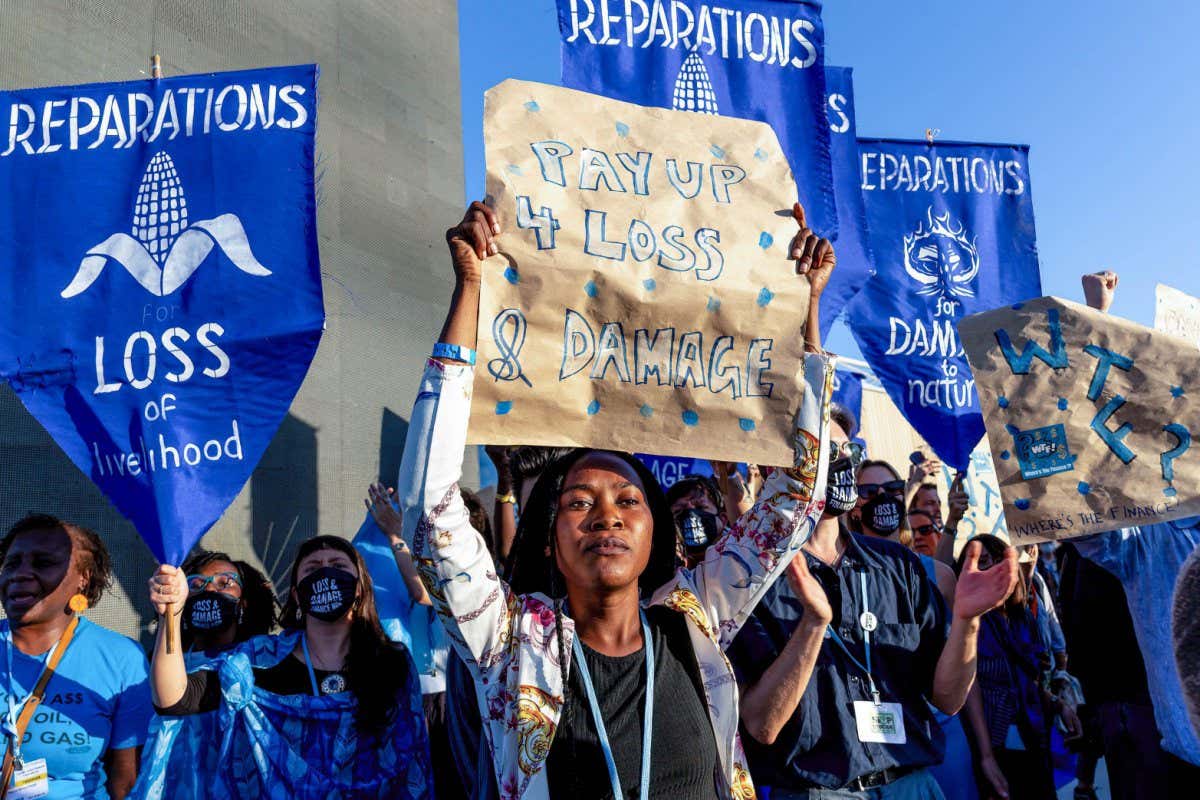Protesters demanding a “loss and damage” deal at the COP27 climate summit in Sharm El-Sheikh, Egypt
SOPA Images Limited/Alamy
Another year, another COP, another failure to cut carbon emissions. As the COP27 climate summit in Sharm El Sheikh, Egypt, drew to a close, delegates from countries most vulnerable to the effects of global warming were celebrating the agreement of a “loss and damage” fund to compensate for the results of escalating climate change. But as the dust has settled, many see this victory as coming at the cost of securing further progress on driving down emissions.
Some activists critcised the deal as a “cut and paste” replica of agreements secured at last year’s COP26 in Glasgow, UK, while technical discussions on cutting emissions this decade resulted in a weak agreement that will do little to push countries into setting more ambitious targets in an effort to stay below 1.5°C of warming above pre-industrial levels.
“We are another year into this critical decade, and not backsliding is not enough. We’re basically one step further towards exceeding 1.5°C,” says Kaveh Guilanpour, a former climate negotiator now at the US-based Center for Climate and Energy Solutions.
Advertisment
With that in mind, is it time to rethink what the world should be aiming to achieve at the annual COP meetings?
The European Union, the UK and others that pushed for more ambitious emissions cuts in Egypt will be hoping that next year’s COP28 summit, due to be held in the United Arab Emirates, will focus more heavily on the causes of climate change, rather than its impacts. They argue – rightly – that without drastic reductions in greenhouse gas emissions, the bill for loss and damage will just keep growing.
On paper, COP28 could be a crucial moment for advancing emissions cuts. The summit will mark the release of the first “Global Stocktake”, an assessment of countries’ progress on their emissions goals, which it is hoped will propel nations to make bolder plans to cut emissions in 2025.
But lower-income countries are becoming exasperated by the constant pressure from richer nations to improve their climate targets, particularly when the financial help that has been promised in return has proven elusive. At one of the final plenaries of COP26, India’s environment minister, Bhupender Yadav, told delegates that too much focus was being placed on pushing countries to increase their ambitions, while “none of the same urgency” was being shown in the drive to increase climate finance.
During COP27, those tensions resurfaced during technical discussions on the “mitigation work programme”, talks charged with scaling up climate ambition this decade. High-income countries such as Switzerland wanted major emitters, regardless of their economic status, to be called on to cut emissions further this decade. But lower-income nations, including India and Bolivia, argued richer countries with the highest historical emissions must take the lead in delivering further emissions cuts before expecting less well-off nations to do more. Bolivia’s chief negotiator, Diego Pacheco, warned the talks were “pressuring developing countries to enhance mitigation action”.
So what is the way forward? Guilanpour says the COP summits need to stop focusing so much on extracting ever more ambitious climate pledges from reluctant governments and concentrate instead on how to make nations actually want to decarbonise faster. “Having pressure only on target setting, while it’s important, increasingly it’s not sufficient,” he says.
That means using the annual climate gatherings to focus more on providing real-world support to nations rolling out electric cars or renewable power, for example. Agreements like the Just Energy Transition Partnership are a glimmer of what this could look like. The JET-Ps, as they are known, see richer nations band together to arrange billions of dollars of financing for lower-income countries to shut down polluting power stations and pivot to green energy. So far two deals have been announced, benefiting South Africa at COP26 and Indonesia this year at COP27.
But schemes like the JET-Ps are time-consuming and resource-intensive, and they are only part of the answer. If high-income nations want faster progress on cutting emissions, they need to show other nations that “green growth”’ isn’t just a slogan. Despite grand promises of a net zero global economy, the only nation in the world delivering climate action in line with a 1.5°C trajectory is Gambia.
Until high-income nations can demonstrate that going green pays off, pushing for faster emissions cuts will be an uphill struggle at COP summits. “It’s not the negotiations that are at fault,” says Guilanpour. “It’s the lack of political leadership.”
Sign up to our free Fix the Planet newsletter to get a dose of climate optimism delivered straight to your inbox, every Thursday
Topics:
































